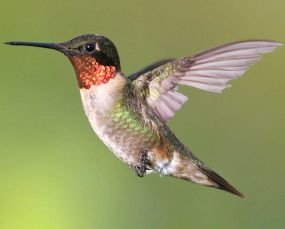Faces of Wetlands: Great Blue Heron
Great Blue Herons are versatile birds commonly seen in wetlands and waterways throughout the summer. Found from coast to coast, they nest and feed in fresh and salt water habitats. They nest as far north as central Canada, and can winter as far south as the Northern tip of South America. In central parts of the country including Minnesota, some have adapted their behavior and stick out the winter instead of flying south, with some help from power plants providing year-round open water.
Great Blue Herons wade through swampy, murky waters, so they can get a reputation for being dirty birds. They do navigate through messy places, but clean feathers are very important. Their fluffy chest feathers serve as a key cleaning tool. Herons comb through these feathers to collect a “down” powder with their toes, and spread it across their feathers like a washcloth. This removes slime that may have collected from fish or oils that may accumulate as they wade through murky waters.
To quickly tell herons apart from cranes, look to their necks. Herons fly with their neck coiled, while cranes fly with their neck extended. Egrets also fly with their neck coiled, but these wading birds are easily distinguished from herons due to their brilliant white feathers. Beyond plumage, Great Blue Herons have a wider variety of feeding habits than Great Egrets. Herons sometimes forage for small mammals to supplement their diet. They can be seen foraging in fields and other places where Egrets won’t venture. But there’s one more complication if you happen to travel to Florida or the Caribbean. There, if you’re lucky, you may just find the rare Great White Heron. This heron is a genetic variation of a Great Blue Heron, and is typically found in humid, shallow everglades. The only way to distinguish Great White Herons from Great Egrets is that Great White Herons lack a small green patch on the face.
Unique animal traits and adaptations shape the stories, culture, and lore of the animals and places where we live. For example, Great Blue Herons have an interesting trait that has shaped the mythology around them. They have special photoreceptors in their eyes, that allow them to be active day or night. Consider this then, in the story of the Heron and the Hummingbird, a tale from the Hitchiti people of the southern US.

“One day, Heron and Hummingbird agreed to race. They said to each other, “We’ll race for four days. Whomever reaches the big dead tree standing on the bank of the river first shall own all of the fish in the water.” Both Hummingbird and Heron loved fish. Hummingbird preferred small minnows, Heron preferred the larger bass and sunfish. Wing to wing, they shook. When the time for the race came, Heron started off at a steady pace. Hummingbird knew Heron was faster, so Hummingbird took the leisure to stop for breaks. While Hummingbird was stopped to taste the flowers, Heron passed on by to take the lead. Hummingbird quickly zipped back in front of Heron, gaining a considerable distance, then stopped again to taste the flowers. This happened a many times, each time with the same passing of Heron and zipping of Hummingbird. Each day ended with Hummingbird in the lead, then Hummingbird would stop to sleep. On the last night, Heron traveled all through the night.
When Hummingbird reached the tree by the river, Heron already there waiting! Dismayed and flustered by the loss, Hummingbird acknowledged that all the water and its fish were now Heron’s. To this day, Hummingbird only tastes the flowers.” (Paraphrased)
Did the Hitchiti people observe Heron’s night activity and get inspired to tell this story of Heron flying all night? Whatever the origin, such stories serve as a tool to teach virtues and values to the next generation. Here the Great Blue Heron teaches us the importance of perseverance, focus, and determination. These virtues extend into virtually every facet of life, but perhaps there's another message at hand. Perhaps in our changing, challenging world, recalling the virtues means going back to the familiar yet potent inspiration for the story itself. Like Great Blue Heron and Hummingbird, we are part of the ongoing, evolving story of the place where we live. What other stories might we create when observing the habits and skills of wildlife? How might this simple observation align our focus back to life's simple virtues?
To learn more about our watershed and the issues we face, visit the waterbodies tab for lake fact sheets, studies, and more. Check out our remote camera projects for a look at our local wildlife, attend an event, or learn about volunteer opportunities to help grow our watershed community. Subscribe to our seasonal newsletter or follow us on social media @VLAWMO.
-Nick Voss, VLAWMO Education and Outreach Coordinator
Sources:
Heron image: VLAWMO
Hummingbird image: Discover Magazine

